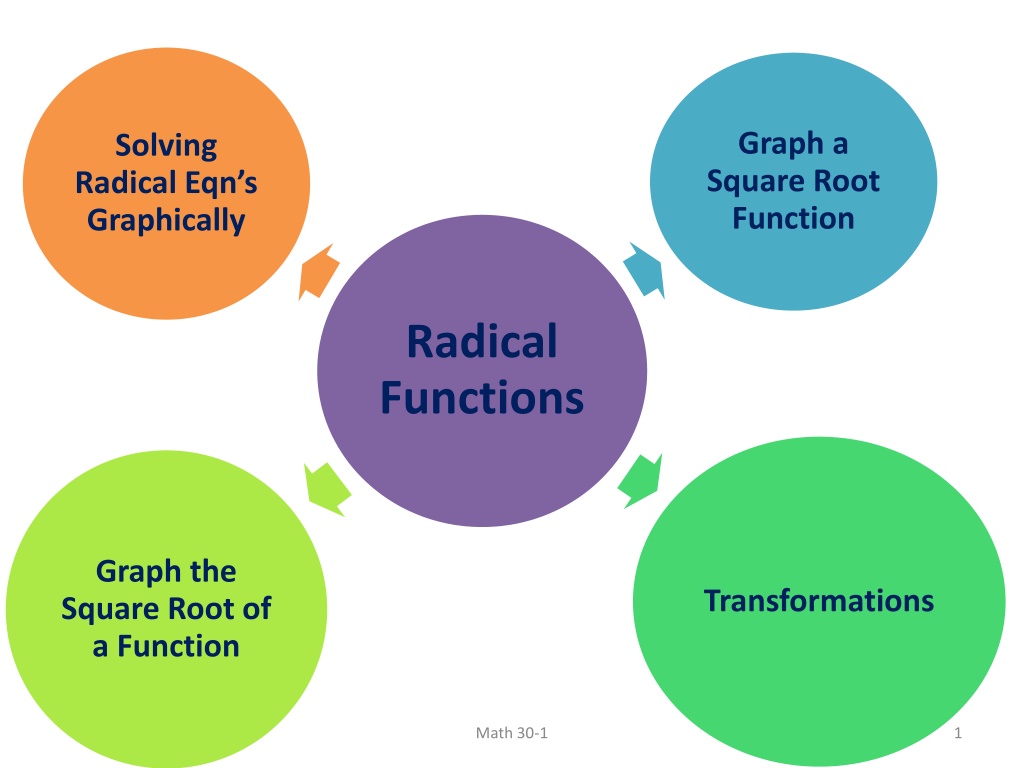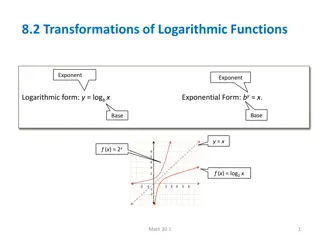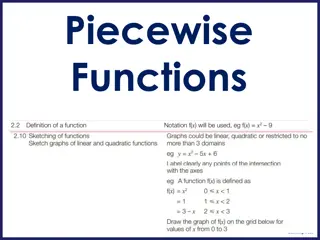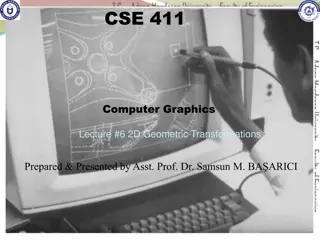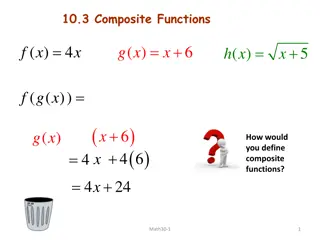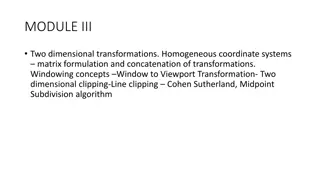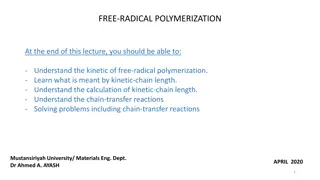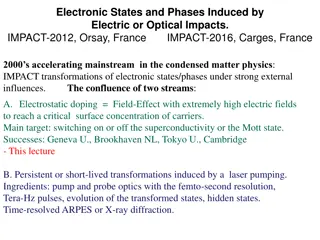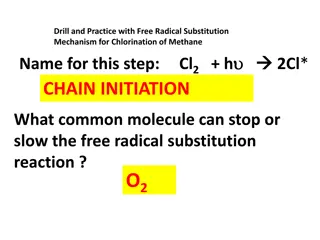Understanding Radical Functions and Transformations in Mathematics
Explore the concept of square root functions, solving radical equations graphically, transformations of radical functions, and more in Mathematics 30-1. Dive into the fundamentals of square roots, graphing techniques, rate of falling objects, domain restrictions, and key points identification. Enhance your understanding through graphical representations and algebraic manipulations.
Download Presentation

Please find below an Image/Link to download the presentation.
The content on the website is provided AS IS for your information and personal use only. It may not be sold, licensed, or shared on other websites without obtaining consent from the author. Download presentation by click this link. If you encounter any issues during the download, it is possible that the publisher has removed the file from their server.
E N D
Presentation Transcript
Graph a Square Root Function Solving Radical Eqn s Graphically Radical Functions Graph the Square Root of a Function Transformations Math 30-1 1
2.1 RADICAL FUNCTIONS AND TRANSFORMATIONS What does square root mean? 2.1 Can you square root? 2.1 Can you square root? How can you estimate a square root if the value is not a perfect square? = ( ) f x x Write the equation for a square root function. Write the equation for the square root of a function. ( ) f x = y How are these the same? Different? Math 30-1 2
What falls faster a brick or a marble? Galileo Galilei pondered this question more than 400 years ago. He theorized that the rate of falling objects depends on air resistance, not on mass. The result was they fell at the same rate. Leaning Tower of Pisa Galileo For objects falling near the surface of Earth, the function d = 5t2 approximately models the time, t, in seconds, for an object to fall a distance, d, in metres, if the resistance caused by air can be ignored. Express time as a function of distance. d t = d d = 2 5 , t d 2, = = t t 5 5 5 Is this correct? Math 30-1 Restriction on the domain. 3
= Graphing y Key Points x Are there any restrictions on the domain? x 0 1 y x x | 0 0 1 4 2 9 3 Range y y x- intercept y- intercept | 0 Math 30-1 4
Transformations of the Radical Function y y x = Which parameters affect the domain? Range? = ( ) k a b x h = Domain? | x x+ | x x + 3 y x Use a table of values to sketch the graph of y x = = + 3 y x 3 0 x 0 1 y x -3 -2 y 0 1 3 0 1 Range? y y 4 2 1 2 | 0 9 3 3 6 Math 30-1 5
= = + y x 3 y x Translate the key points 3 units left. Invariant Points? Math 30-1 6
Sketch the Graph using Transformations y x = y = 1 3 2 x F R S T Domain | x x 1 Range y y | 3 Invariant Points? Math 30-1 7
Consider the function y = f(x) Write an equation for the function in the form: y a x = = y bx 1 2 1 4 = = y x y x Show algebraically that the two equations are equivalent. 2 1 4 1 2 = = y x y x 1 2 1 4 = y x = y x Math 30-1 8
Match each graph with its function equation = + = + = + 2 1 = 4 4 2 1 y x y x y x y x Domain, Range, Invariant Points Math 30-1 9
Write the function equation from the graph in the form = + ( ) y a b x h k 2 Horizontal translation 7 units right Vertical translation 3 units up ( y a b x = + 7 ) 3 Vertical Stretch Horizontal Stretch Each vertical distance is 2 times the corresponding distance for y x = a = 2 Each horizontal distance is times the corresponding distance for = y x = + 4( 7) 3 y x = + 2 ( 7) 3 y x Math 30-1 10
Assignment: Page: 72 1c,d, 2a, 3, 4a,b, 5a,b,f, 6, 8, 9 Math 30-1 11
